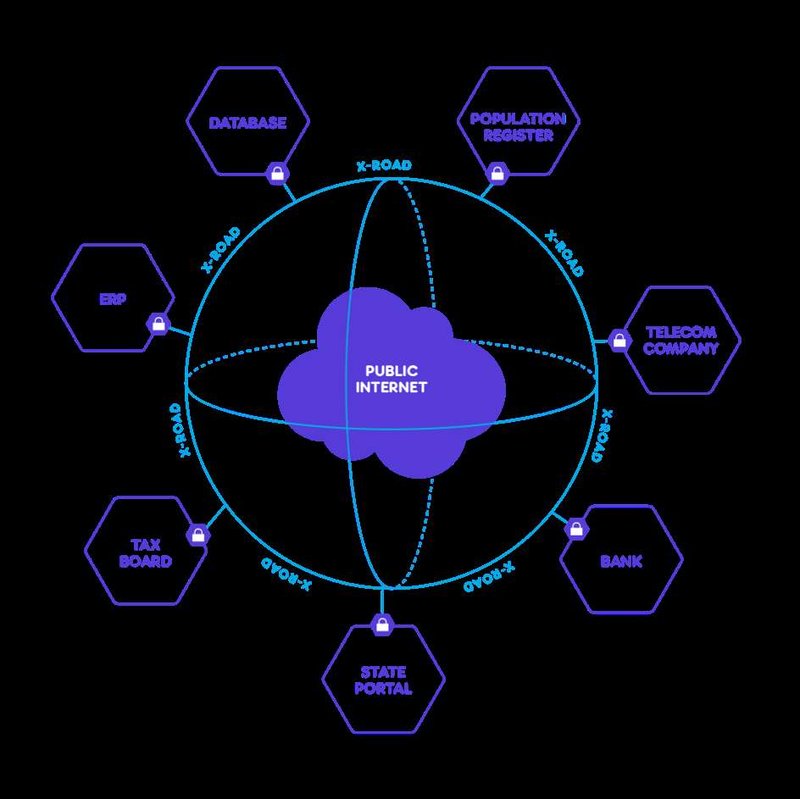Governments and countries around the world are competing to provide a better environment and better services to companies and their citizens. Arguably, there are two customer segments for governments, both requiring services that are efficient and easy-to-use. As a result of this general trend, governments are looking at implementing electronic services. Some of them have also defined the goal of implementing electronic services as a means of creating a digital society with e-governance as their biggest driving force. How is this achieved?
Electronic Governance uses Information and Communication Technologies (ICT) to deliver government services by integrating stand-alone systems between the services of
- Government-to-Government (G2G),
- Government-to-Business (G2B),
- Government-to-Citizens (G2C).
The systems are linked with processes and interactions within the entire government framework. Estonia, the leading country when it comes to e-governance, currently saves over 1407 years of working time annually with 99% of its public services available online. In other words, Estonia saves 2% of its GDP just by using Digital Signature. But e-governance can do so much more.
E-governance Improves Lives
In many countries, taxpayers can file their taxes electronically, renew their drivers’ licenses, and manage their government benefits, all of which can be conducted online. In addition, employees within government agencies can also use the Internet regularly to manage internal processes.
With the amount of data available, public service organisations can provide forecast services to help aid the day-to-day workload of public servants. Police and social services, in particular, have the potential to benefit from implementing these systems by tapping into existing databases. This is also referred to as data interoperability. However, first you need to set e-governance up.
Key prerequisites are necessary when beginning the implementation of e-governance, for example, legal framework, infrastructure, responsible organisation, fiscal framework, and the prerequisite of the political motivations. On the infrastructure side, there is a need for a cooperation agreement, and we suggest having an Interoperability framework in place. Thereafter, all the developments for the future can commence.
More Examples of E-governance
The tool with the greatest impact in the implementation of e-governance is the secure data exchange layer- Enterprise Service Bus (ESB), called X-Road in Estonia. Moreover, the ESB (X-road) is a communication platform for interconnected software applications. This platform additionally keeps data secure and maintains security in several layers within the data exchange.
A great example of this application is the digital drug prescription service that is widely used in Estonia’s healthcare system: a GP workstation is linked with the system used by pharmacists using a unique indicator (Personal ID number, social security number in US) assigned to all residents.
Another example is the e-Police solution, which also contributes to e-governance, where Police officer role-specific solutions can be successfully applied to boost the efficiency of individual departments. A customised interface can be used to access the data from a different state and international databases, like the information needed for misdemeanours, criminal investigations, traffic police officers or command and control centre operators in making their work more efficient.
Rather than taking on an extensive project of building a monolithic platform, organisations should opt to break the process down into shorter (4-month-long) stages with defined objectives and modules. Modularity gives an opportunity in later solution life cycle stages to allow for any changes in the law, competition, and technology to be incorporated promptly, without the need to start all over or huge time required for change implementation to the monolithic architecture.
All integrations add complexity and pressure on both the scope and the end user; therefore, customisation is an important way forward. For instance, a mobile-friendly interface for foot patrol officers could allow for a facial recognition feature, while reactive patrol officers could access information from the housing and crime registers to be fully prepared for the next job ahead.
Set Realistic Objectives
Many new e-government initiatives have neither generated the anticipated interest among users nor enabled clear gains in operational efficiency. The central idea here, in terms of the design and objective, is user experience and usability. We should not expect the civil servant or a citizen to attend a workshop in order to be able to use the system; the system should rather fit into the current routine of a specific user. Implementing these changes will enable public sector organisations to provide digitised services that are used by more people with greater ease. These organisations should also focus on reducing the costs of developing and maintaining the services over time and, thus, providing a higher return on public money spent.
The journey is as important as the destination, in other words, the process of determining the vision of digital services directly impact the long-term viability of the product. The key here is to take an active step-by-step approach. At Thorgate, we kick-start the process with minimum viable product (MVP) analysis, which allows us to define the minimum features needed for the digital product and then we produce a detailed scope document featuring functionality and user flows. With this extremely useful information at the helm, we will proceed with the design and development stages. Throughout its existence, the Thorgate team has constantly upgraded the process of getting from an idea to a digital service.
Get in touch today to register for the next Thorgate MVP workshop.


